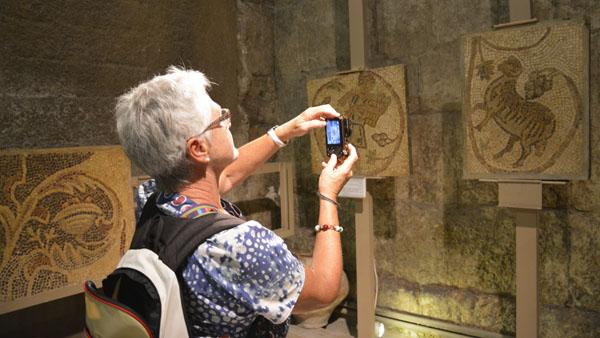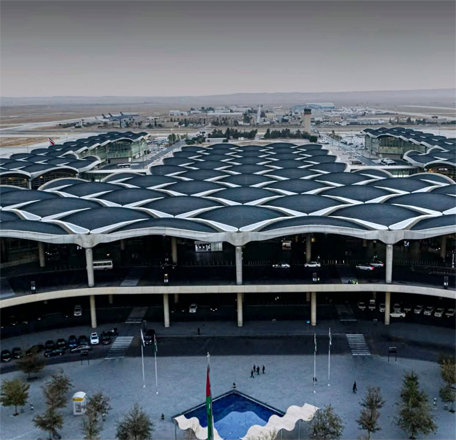You are here
Jordan’s tourism industry feels impact of regional volatility
Apr 27,2015 - Last updated at Apr 27,2015

AMMAN — A concerted drive is under way in Jordan to reinvigorate the important tourism sector that has been curtailed by regional instability.
The total number of visitors in 2014 dipped 1.2 per cent year-on-year, reaching 5.3 million, as the number of tourists arriving on daytrips slipped 7.4 per cent year-on-year to 1.3 million, according to data provided by the Jordan Tourism Board (JTB). The number of overnight visitors fared slightly better in the year, rising 1.1 per cent to reach nearly 4 million, but according to the latest data, the tally for January and February is down 8.3 per cent year-on-year.
Despite the drop in overall numbers, tourism receipts remained stable throughout 2014, totalling JD3.1 billion ($4.37 billion), according to Central Bank of Jordan data, up 6.3 per cent on the previous year, thanks in part to a rise in tourists from the Gulf region.
Jordanian expatriates accounted for the largest number of all visitors in 2014, making up just under a third of all overnight stays in 2014, marking an increase of 10.8 per cent year-on-year. Overnight arrivals from Gulf countries, which made up 17.3 per cent of the total number of visitors, rose 3.1 per cent. However, visitors from other Arab countries, which represented the largest group of visitors in 2013, slipped 7.6 per cent to make up 27.6 per cent of total overnight arrivals in 2014.
Regional challenges
The various regional conflicts, and most notably the rise of the so-called Daesh in neighbouring Syria and Iraq, is largely responsible for visitors staying away, even though internally Jordan remains stable.
Industry players believe that other regional events are also causing problems.
“A lot of winter bookings were cancelled in the wake of the Gaza conflict and since then the issue of Daesh…has become more and more prominent,” said Peter Hoesli, general manager of the Mövenpick Resort Dead Sea in Sweimeh, near Madaba.
The fall in visitors number has prompted the authorities, supported by industry representatives, to introduce measures aimed at boosting activity. A Cabinet reshuffle in early March led to the reappointment of a dedicated minister for tourism in a widely welcomed move.
Later in the month, the Ministry of Tourism and Antiquities launched a campaign in conjunction with the JTB and tour operators to galvanise domestic tourism. The campaign includes promotions on travel packages to the Dead Sea and historical sites such as Petra.
But keen to see more done, industry players have also drawn up a number of proposals, which include a reduction of entry fees to Petra for visitors staying in nearby hotels, as well as proposals to support the struggling hotel industry with cuts to taxes and lower electricity prices.
Reaching for the skies
New developments in the aviation sector could prove instrumental in boosting air traffic, and visitor numbers, to the Kingdom.
In a significant development at the start of the year, UAE-based budget airline Air Arabia bought a 49 per cent stake in Jordanian charter carrier Petra Airlines, to be rebranded Air Arabia Jordan.
The firm plans to open a new international hub at Amman’s Queen Alia International Airport (QAIA), becoming Air Arabia’s fifth in the region and operating flights to Europe, the Middle East and North Africa.
“The acquisition is good news for the industry, as Air Arabia represents a new, large potential source of capital,” Kjeld Binger, chief executive officer at Airport International Group — which operates QAIA — told Oxford Business Group (OBG).
“It will bring more jobs and contracts for services, and more competition will give rise to market growth and more innovation,” he added.
Industry players hope that the merger of these low cost carriers will help counter the 15 per cent year-on-year drop in passenger traffic seen at QAIA last year. This was compounded by the UK’s budget airline easyJet cancelling its three-times-weekly London Gatwick route to Amman last year.
Directives from the government to boost tourism numbers are spurring other carriers into action.
In March, the national flag carrier, Royal Jordanian, announced plans to offer discounted tickets to tour operators for use in package deals. The initiative is targeted primarily at Gulf Cooperation Council and European markets, which, between them, account for almost half of overnight arrivals before the inclusion of Jordanians living abroad.
The tourism industry is also calling for other measures to be introduced including the abolition of a departure tax for charter flights and low-cost carriers using Amman Civil Airport at Marka.
Whilst perhaps little can be done to boost sentiment amongst travellers, the Jordanian authorities and stakeholders in the tourism sector are looking to do all they can to try to create an environment for the industry to grow.
In the long-term, they will certainly be hoping for more favourable regional headwinds.
This article was provided by Oxford Business Group
Related Articles
AMMAN — Cargo traffic at Queen Alia International Airport (QAIA) rose by 8.3 per cent to 48,973 tonnes during the first half of this y
Jordan is counting on low-cost aviation to reach new destinations and organise regular direct flights from traditional ones to further promote its brand as a safe destination, especially for tourism, Transport Minister Lina Shbeeb said on Monday.
AMMAN — Airport International Group announced on Wednesday that Queen Alia International Airport (QAIA) welcomed 726,635 passengers (PAX) in


















